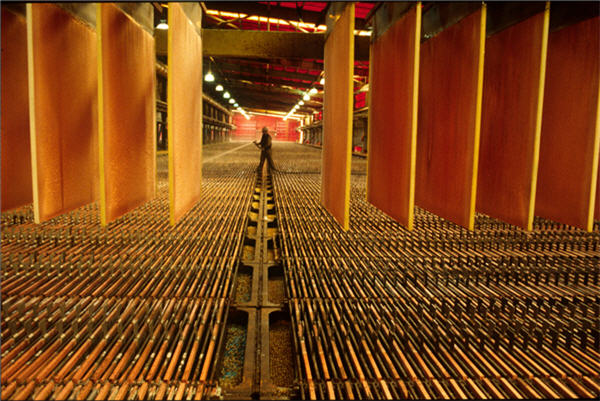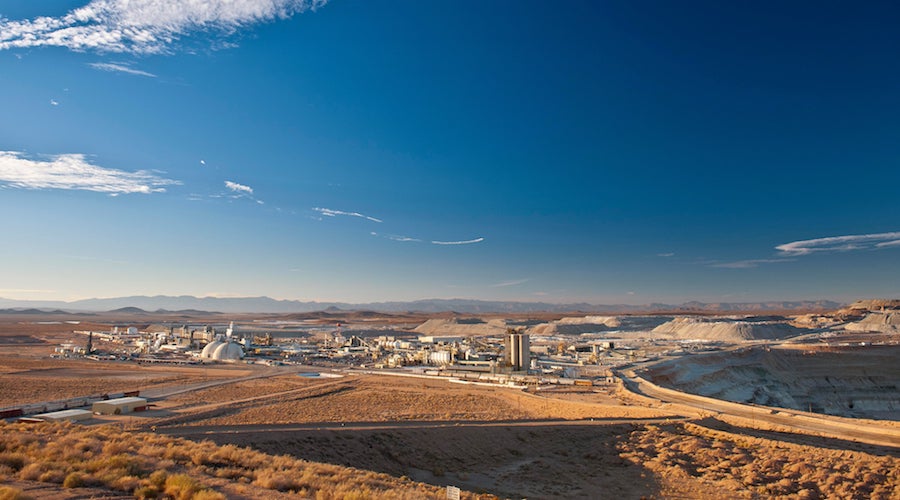Copper mining has a dirty problem

Source: Codelco
While demand growth has been fairly robust, the copper price has been under pressure this year in anticipation of a swing into surplus after five years of deficits as a slew of new mines open through 2016.
But the flood of new supply are coming at an ever higher cost as high grade deposits, particularly in South America, are depleted and expansion projects require huge economies of scale to handle the increased tonnage required.
A new report by GFMS, a metals and mining consultancy, highlights another problem many of the newer mines face: dirty concentrate.
According to the authors the proportion of deleterious elements such as arsenic, antimony and bismuth have crept up relative to copper concentrate grades over the past decade as result of a greater proportion of low grade – high tonnage operations.
This has resulted in producers incurring progressively higher penalty charges and receiving lower payables from smelters. Thanks to increasing environmental restrictions most smelters no longer accept concentrates with greater than 0.5% arsenic.
GFMS says the recently commissioned Ministro Hales (Codelco) and Toromocho (Chinalco) operations have served to highlight the difficulties that higher concentrations of arsenic and other deleterious elements can pose:
Sources said that problems with the roaster at Ministro Hales, designed to process the high arsenic concentrate had forced the firm to cancel sales and buy raw material from the spot market.
In mid-August reports suggested that Codelco had reached a deal with a trader to blend Hales’ concentrate with third-party material for sale in China. The Hales roaster was most recently reported by a mine official as operating normally at close to full capacity. Ultimately, the mine should be able to produce 160,000 tonnes per annum (tpa) of copper.
We also understand that Chinalco’s 300,000 tpa Toromocho mine in Peru, which has so far struggled to produce in line with ramp up plans, has taken the route of blending material from different portions of the ore deposit to dilute arsenic content. Given the amounts of material required, this would not constitute a final solution for the industry as a whole as impurities become a broader issue over the long term.
GFMS also discusses possible solutions to the arsenic problem noting that a number of companies are testing hydrometallurgical processes including Teck Resources and Aurubis which has pilot plants of the CESL Cu-As process on over 100 copper-gold and copper-arsenic concentrates.
The authors caution that the capital expenditure outlays to equip plants to handle the hydrometallurgical processes are estimated to be fairly sizeable amd the economics of the process lend themselves best to brownfield operations with an existing SX-EW plant.
But serious challenges remain and GFMS says world, the copper industry may well be mindful of the nickel industry’s experience in the late 1990s and early 2000s:
The advent of nickel pressure acid leach (PAL) projects using hydrometallurgical technology was heralded as the industry’s salvation, enabling low cost processing of previously hard to treat laterite ore as availability of easier to exploit sulphide deposits diminished.
However, development and production costs far exceeded expectations as some companies strived to bring on plants with sizeable capacity too quickly. Geological considerations have also proved problematic in some instances. Some of those early stage PAL projects failed to see the light of day.
Burnt by this earlier, and comparatively recent, experience, financiers no doubt will need to see proof that these copper processes to deal with higher impurities can work on an industry-wide basis.
That may take time; possibly even decades some industry sources say, and require the incremental implementation of small scale projects.
More News
{{ commodity.name }}
{{ post.title }}
{{ post.date }}




8 Comments
Dave W.
An Australian group have developed a hydromet method for 95% removal of As from enargite (and other minerals) copper concentrates. http://hrltesting.com/pilot-plant-programme-toowong-process/
Jan
Would that group be Clean TeQ as they are developing processes for this sort of thing?
Mark Harder
How are the leakage of As from mine sites and disposal of contaminants in hydrometallurgical waste alleviated?
Ocke
Agnico Eagle uses bitumen pads for clarifier ponds and waste-dumps when processing Au ore with high As content. And they are mighty proud of them. How prone they are to leakage? No one knows..
Jan
If you look at Clean Teq ASX:CLQ you will gain a better idea of what they have been doing.
Diogenes Uceda
There is not a a proven hydromet option to replace the smelting process of copper concentrates. There are several technoligies still in the piloting or demonstration stage.
Diogenes Uceda
Dr. Corby,
Thanks for the information, I was not aware of this ASL hydromet process, I will try to find more information. Please return my regards to Dr. Martins.
Cheers,
Dio
Corby
Dio
Drop me an e mail and I will send you some papers.
I was the Chief Process Engineer at Sunshine.
Best
Corby